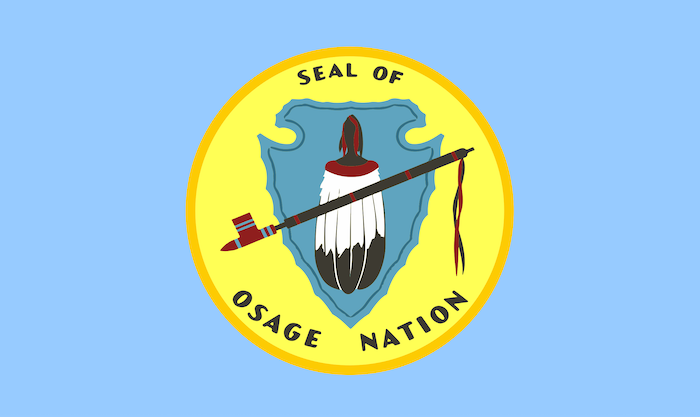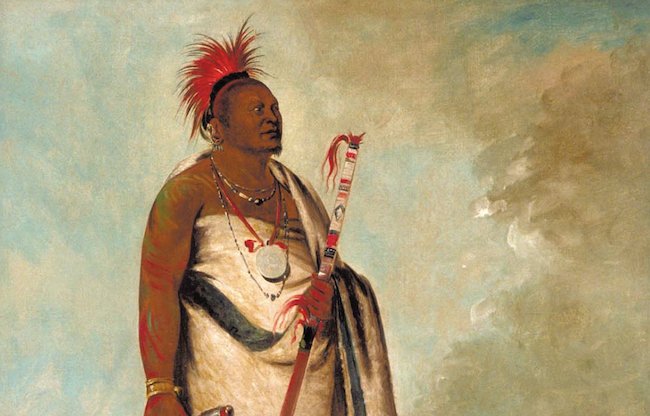
Osage Nation
The Osage people, also known as the Ni-u-kon-ska or "Children of the Middle Waters," are a Native American tribe with a rich cultural history. Originating from the Ohio Valley, they migrated westward, establishing themselves near the Mississippi River before eventually settling in the present-day states of Missouri, Arkansas, Kansas, and Oklahoma.
Range:
The Osage originally hailed from the Ohio Valley region, but gradually migrated westward. By the late 17th century, they had settled near the Mississippi River. In the early 19th century, they were forcibly moved to a reservation in Kansas. Finally, in the mid-19th century, they established their current home in northeastern Oklahoma.
Diet:
The Osage were skilled hunters and agriculturalists. Their diet primarily consisted of bison, deer, elk, and other game found in the vast plains of the Midwest. Meat was sometimes dried, braided together, dipped in fat, and stored in rawhide, where it could stay fresh for several years! The Osage also made sausages by stuffing the intestines of the buffalo with meat and water before cooking it over a fire.
They were also proficient farmers, cultivating crops such as maize (corn), beans, and squash. The "Three Sisters" cultivation technique - where these crops were planted together - was central to their agricultural practices. The Three Sisters were interplanted, creating a mutually beneficial growing environment. The maize provided a natural trellis for the beans to climb, while the beans enriched the soil with nitrogen, benefiting the other crops. The squash plants served as a natural ground cover, helping to retain moisture in the soil and suppress weed growth. The Osage also collected wild persimmons, which they cut, dried, and made into fruit leather.
Older warriors often served as the community chefs, who would plan and prepare feasts.
Osage Chief |
Homes:
The traditional dwellings of the Osage were rectangular longhouses or lodges that could measure up to 100 feet in length and 20 feet in width. They were primarily built from saplings that were driven into the ground, bent inward, and tied at the top, where interwoven horizontal saplings comprised the structure of the roof. Mats, reeds, and furs were used to cover the roof. The entrance was built into the east side of the structure. Multiple families inhabited these longhouses.
When Osage warriors were hunting buffalo, they would build teepees, similar to those of other Plains nations.
Religion and Beliefs:
The Osage strived to create balance and harmony in life, spiritualism, and nature. Disharmony would occur if Osage warriors robbed another tribe, or, if an enemy was killed in battle. The Osage would attempt to balance the disharmony by expressing grief and sadness.
Like other Plains nations, they revered Wakonda, a mysterious life-force that created all living things. According to Osage lore, Wakonda created the Osage by sending the sky people to the surface of the Earth, where they met the Earth people. The Osage believed the sky represented a form of masculinity, while the Earth represented a form of femininity. Villages were divided by clans in this manner, with the sky people living on the north side of the main Osage village trail, and the Earth people on the south side. Most men in the village shaved their heads except for a scalplock that extended from the forehead to the back of the neck. The clan a man belong to could be determined by the pattern of the scalplock.
Marriages were typically arranged. Only a man and woman from different clans could marry. Because it was a patrilineal society, husband's were expected to pay the father of the bride a tribute. In addition, husband's could have multiple wives, including the sisters of his first wife. Divorce was common among the Osage and could be initiated by either the husband or the wife. If a divorce was granted, the husband was expected to move out of the lodge shared with his former wife.
Traditions:
The Osage held a deep respect for their elders and valued communal decision-making. They organized themselves into a complex social structure of clans, with each clan holding specific responsibilities and roles within the tribe. Ceremonies and rituals played a vital role in their culture, with events like the In-Lon-Schka, or "Buffalo Dance," serving as important communal gatherings.
Another ritual was called "Striking of the Earth," which was performed to show gratitude to Wakonda for uniting the sky and the Earth. In this ceremony, a respected elder might strike the ground with a war club to form a symbol of the sun. Once the symbol was formed, straight lines were drawn from east to west to symbolize the path of sun, and curved lines were drawn from north to south to symbolize the rays of the sun.
